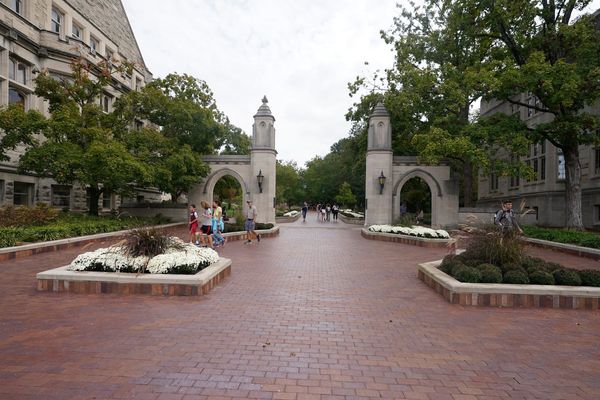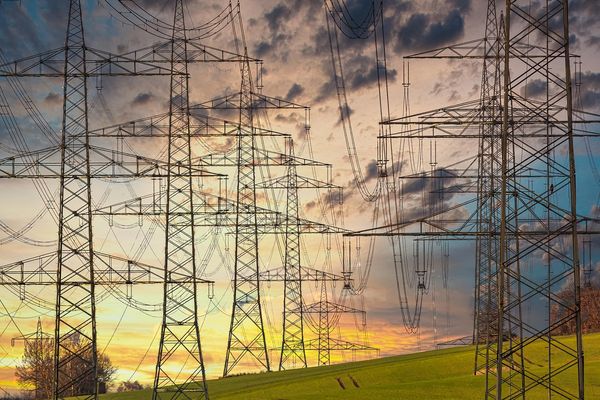
Dozens of wildfires are causing chaos across the Texas Panhandle as the Smokehouse Creek fire – now the largest blaze in state history – grew to more than 1m acres on Thursday, even as a dusting of snow brought a measure of relief.
At least two people have died, according to officials. The second victim, confirmed by the Texas department of public safety on Thursday afternoon, has been identified as Cindy Owens, a 40-year-old woman who was reportedly overtaken by the fire when she got out of her truck in the town of Canadian. The first, 83-year-old grandmother Joyce Blankenship, was killed in her neighborhood of Stinnett, north-east of Amarillo.
Fueled by parched grasses, strong winds and abnormally warm temperatures, the fires have scorched more than 1.2m acres since last Sunday, according to the Texas A&M forest service, leaving a desolate landscape of charred prairie, dead cattle and burned-out homes in their wake.
The Smokehouse Creek fire, which merged with another fire, has exploded in recent days, now sweeping across close to 1,700 sq miles (4,400 sq km). As of Thursday, the fire was just 3% contained. “This is now both the largest and most destructive fire in Texas history,” the West Odessa volunteer fire department said in a post on Facebook. “It is also the second largest wildfire in US history.”
Greg Abbott, the state’s governor, issued a disaster declaration for 60 counties. More than a dozen homes in Oklahoma have also been destroyed, according to state emergency officials, as the behemoth blaze crossed state lines.
Cooler temperatures have offered a temporary reprieve as firefighters work to corral the conflagration, but critical fire weather is forecast to return across the plains this weekend, including gusty winds and low humidity, according to the National Weather Service. Meanwhile, the Texas A&M forest service raised its wildland fire preparedness level to level 3.
“The rain and the snow is beneficial right now, we’re using it to our advantage,” a Texas A&M forest service spokesman, Juan Rodriguez, said of the Smokehouse Creek fire. “When the fire isn’t blowing up and moving very fast, firefighters are able to actually catch up and get to those parts of the fire.”
Widespread power outages have also been an issue, as the fire claimed power lines and vital infrastructure. The North Plains Electric Cooperative reported roughly 115 miles of line has to be rebuilt, and the agency hopes to restore power to the areas by Monday.
Joe Biden spoke about the fires during his trip to Brownsville, Texas, where he toured the US-Mexico border. The president announced that the federal government had provided 500 people to help battle the fires, along with air tankers, helicopters and other equipment.
Thanking first responders for their heroic work, Biden also shared that Texas and Oklahoma will be reimbursed by Fema for the costs of “keeping folks safe”. Adding that Texas had already received $13bn for disaster relief during his presidency, Biden said: “When disasters strike, there is no red state or blue state where I come from. There are just communities and families looking for help.”
But the president also chided those who question whether human-caused warming has played a role.
“I love some of my Neanderthal friends who still think there is no climate change,” he said, adding that the administration will support remaking destroyed buildings to higher standards to adapt to a more fiery future. “You fly over these areas that are just burned to the ground. You will see in the midst of 20 homes just totally destroyed, one home sitting there because it had the right roof on it.”
Emergency response crews have not yet been able to tally the destruction, but it is clear the fires have left a devastating mark on rural communities across this region.
The small town of Fritch, north of Amarillo, lost hundreds of homes in a 2014 fire and appeared to be hit hard again. Mayor Tom Ray said on Wednesday that an estimated 40-50 homes were destroyed on the southern edge of the town of 2,200.
The Hemphill county emergency management coordinator, Bill Kendall, said about 40 homes were burned near the town of Canadian, and described the charred terrain as being “like a moonscape. It’s just all gone.”
Hundreds of dead cattle were left lying in the charred fields, but the Texas agriculture commissioner, Sid Miller, estimated the number of cattle killed in the fires to be in the thousands, with more likely to come. “There’ll be cattle that we’ll have to euthanize,” Miller said. “They’ll have burned hooves, burned udders.”
Gray skies loomed over huge scars of blackened earth dotted with scrub brush, ranchland, rocky canyons and oil rigs. In Stinnett, a town of about 1,600, someone propped up an American flag outside a destroyed home.
Dylan Phillips, 24, said he hardly recognized his Stinnett neighborhood, which was littered with melted street signs and the charred frames of cars and trucks. His family’s home survived, but at least half a dozen others were smoking rubble.
“It was brutal,” Phillips said. “The street lights were out. It was nothing but embers and flames.”







